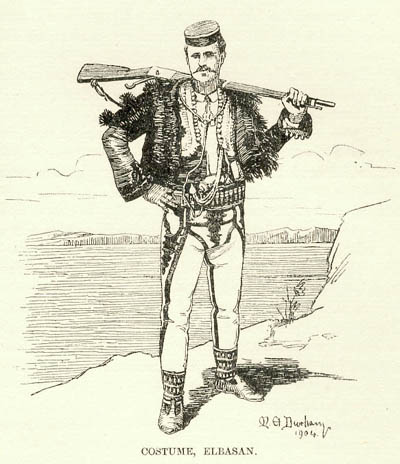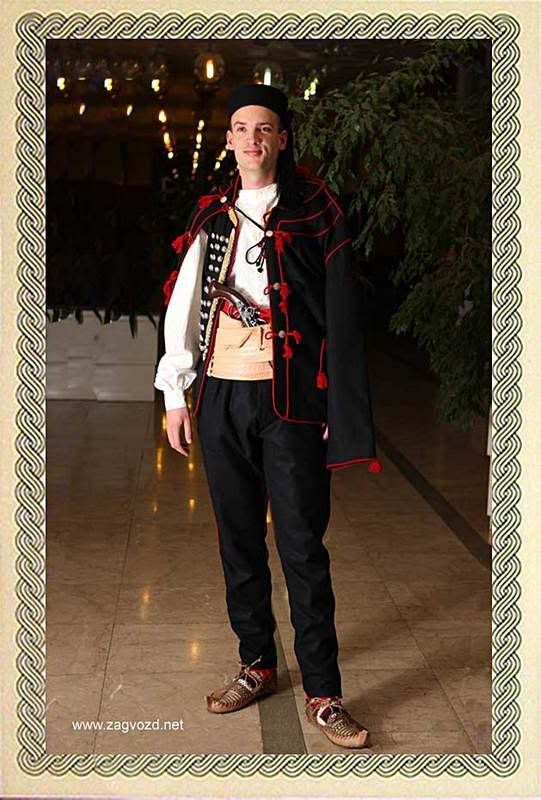|
|
Post by hellboy87 on Nov 19, 2008 0:36:50 GMT -5
its my great-great grandfather Gorstak.
the thing is,then,anyone who came from Ottoman land was called a Turk.The Syro-Lebanese immigrants to the Americas were called that when they came there.Anatolian Armenians were called Asiatic Turks.This is because much of the West called the Ottoman Empire,Turkey(land of Turks).
The third Prime Minister of Malaysia,had a Circassian grandmother,but the press say he is part Turkish because his grandma was given to the Sultan of Johor by the Ottoman sultan.See? They say Turkish because of Ottoman descent.
Very hard to say when it comes to mine.My great-great grandfather started a family and died in Medan,Indonesia and then his wife and son(my great-grand dad) moved to Peninsular Malaysia.
And yes,I do know that Muslims in the Balkans and Greece were 'Turks'.
So,as for headgear,it was just those regional variety of turbans,and then the fez.
But do you know why,there was that mixed turban+fez thing? See many of that too!
|
|
tyson
Amicus

Posts: 1,256
|
Post by tyson on Nov 19, 2008 0:54:58 GMT -5
turbans werent just worn by the muslim bosniaks, but also by catholic croats from parts of western BiH (livno, duvno, kupres, posusje) and the dalmatian hinterland (metkovic, imotski, sinj).
in other words, the lands of the hajduks who were crossing back and forth over the border, engaging in guerrella warefare against the occupiers,.... the ottoman empire & venetian republic.
|
|
tyson
Amicus

Posts: 1,256
|
Post by tyson on Nov 19, 2008 1:09:04 GMT -5
croat hajduk, "mijat tomic"  here's a picture of croat gusle player "zeljko simic"  here's a picture of croat hajduk andrijica simic, from zeljko simic's gusle album cover.  |
|
|
|
Post by kapetan on Nov 19, 2008 1:09:44 GMT -5
turbans werent just worn by the muslim bosniaks, but also by catholic croats from parts of western BiH (livno, duvno, kupres, posusje) and the dalmatian hinterland (metkovic, imotski, sinj). in other words, the lands of the hajduks who were crossing back and forth over the border, engaging in guerrella warefare against the occupiers,.... the ottoman empire & venetian republic. yup my pics werent just muslims. its what i been saying. clothes differend region to region and everyone wore turbans and simmilar shit more or less. herzegovina was influenced alot by montenegrin shit. |
|
tyson
Amicus

Posts: 1,256
|
Post by tyson on Nov 19, 2008 1:17:28 GMT -5
^
more like the nosnje worn from the old principalities of the neretljani, zahumlje, travunija, and duklja had similar nosnje., hence why nosnje from the whole dubrovnik region is similar to montenegrin nosnje.
we croats refer to this area as red croatia. serbs or bosniaks would refer to this area as something else.
but what can be agreed on is that the old peoples who were living in these principalities were culturally and ethnically indistinguishable. they just had different princes or dukes ruling different parts.
|
|
|
|
Post by fazlinho on Nov 19, 2008 2:32:56 GMT -5
I very much doubt Gorshtak meant that.
|
|
tyson
Amicus

Posts: 1,256
|
Post by tyson on Nov 19, 2008 2:38:43 GMT -5
he said that herzegovinans were heavily montenegrin influenced, and i replied with my response countering that claim. they were always culturally similar.
|
|
|
|
Post by fazlinho on Nov 19, 2008 2:45:44 GMT -5
That's why I said Gorshtak didn't mean that, of course you did.
|
|
|
|
Post by hellboy87 on Nov 19, 2008 13:13:44 GMT -5
You know,I also saw another type of hat in the site that Gorstak showed me.Its a flat hat.
Its amazing,that the Bosniaks,as an ethnic group has so much clothing differences
|
|
|
|
Post by Emperor AAdmin on Nov 19, 2008 13:17:32 GMT -5
The fez cap originated in Greece[2][3][4][5][6][7][8][9] and was subsequently worn by the Medieval Ottoman Turks[10][11][12][13][14] during their conquest of Byzantine Anatolia. Fez (basically a fancier version of a Montenegrin cap in terms of appearance) like the Montenegrin caps (seen also in similar forms in Macedonia, Greece and Hercegovina) are of Balkanic origin en.wikipedia.org/wiki/Fez_(clothing) |
|
|
|
Post by kapetan on Nov 19, 2008 15:31:49 GMT -5
You know,I also saw another type of hat in the site that Gorstak showed me.Its a flat hat. Its amazing,that the Bosniaks,as an ethnic group has so much clothing differences serbia has alot of different regional looks too...alot of countries do. |
|
tyson
Amicus

Posts: 1,256
|
Post by tyson on Nov 19, 2008 22:35:18 GMT -5
^ as does croatia, with its adriatic, dinaric, and panonian zones are all very much different to each other, and there is also alot of variations within those zones aswell. The fez cap originated in Greece[2][3][4][5][6][7][8][9] and was subsequently worn by the Medieval Ottoman Turks[10][11][12][13][14] during their conquest of Byzantine Anatolia. Fez (basically a fancier version of a Montenegrin cap in terms of appearance) like the Montenegrin caps (seen also in similar forms in Macedonia, Greece and Hercegovina) are of Balkanic originen.wikipedia.org/wiki/Fez_(clothing)dont forget lika caps, dalmatinska zagora caps, and dubrovnik region caps |
|
|
|
Post by srbobran on Nov 19, 2008 23:02:54 GMT -5
Serbs did too. In fact, my father (when we visited Serbia last time) bought an original photograph of Milos Obrenovic (wearing a turban) from way back in the days of the principality.
|
|
|
|
Post by Emperor AAdmin on Nov 20, 2008 0:04:03 GMT -5
 Risan, Montenegro  Hercegovina  Dubrovnik  Dalmacija  Sibenik (Dalmacija)  Lika  Krajina  Bosnia  ('New') Macedonia  Elbasan, Albania  Aromanian  Skrapar, South Albania  Kastoria, Macedonia  Epirus  Crete |
|
tyson
Amicus

Posts: 1,256
|
Post by tyson on Nov 20, 2008 0:46:09 GMT -5
lika caps and traditional dress    --------------------------------------- dalmatinska zagora cap and traditional dress, from srijane, which is inland from omis  dalmatinska zagora cap and traditonal dress from drnis  --------------------------- traditional caps and dress for konavle. the female cap to the left is worn by unmarried females, and the white veil to the far right is worn by married women. in the middle is the male dress and cap .  here's a close-up of the female konavle dress, with the cap worn by unmarried females.  here is another 2 pictures of konavle traditional dress. the female that is wearing the crown made of flowers on her head, wears that when she is getting married at a wedding.   here is the male and female traditonal dress of dubrovnik proper. as you can see the latin/venetian influence in the female dress, and the influence by the dubrovnik hinterland of the male dress. almost the same is the konavle male dress, in that they both use red, white, black and gold colors in the dress, but dubrovnik and zupa dubrovacka uses blue color in the dress aswell, where as konavle doesnt.  |
|
|
|
Post by tito on Nov 20, 2008 0:55:11 GMT -5
|
|
tyson
Amicus

Posts: 1,256
|
Post by tyson on Nov 20, 2008 1:13:35 GMT -5
even in medulin, istra they have a dinaric influenced dress, with a cap  nosnje from zagvozd in dalmatinska zagora   |
|
tyson
Amicus

Posts: 1,256
|
Post by tyson on Nov 20, 2008 2:07:04 GMT -5
|
|
|
|
Post by kapetan on Nov 20, 2008 2:09:11 GMT -5
christians wearing turbans.  |
|
|
|
Post by kapetan on Nov 20, 2008 2:11:32 GMT -5
catholic from central bosnia  |
|